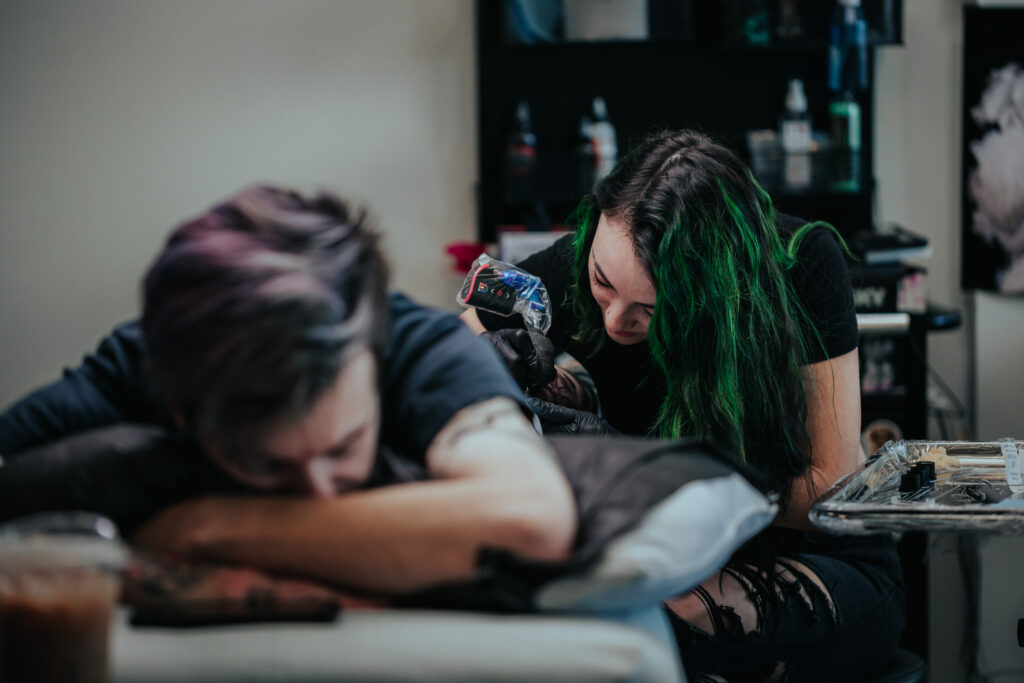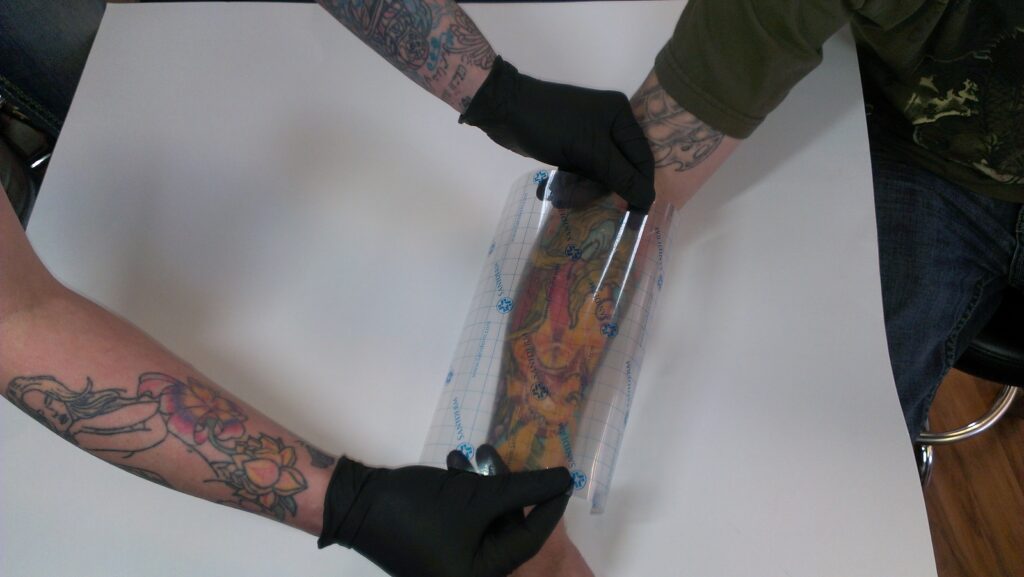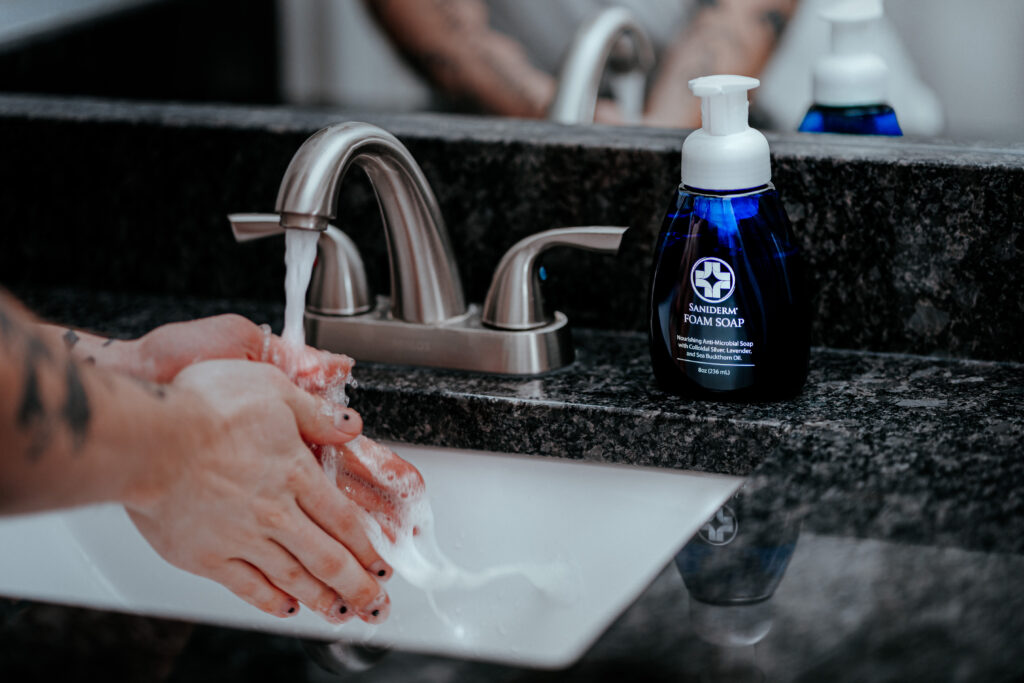
You have a beautiful new tattoo, and all you want to do is show it off. But first, it needs to heal. And to heal well and quickly, that means you need to take extra care to promote tattoo healing. And it also means you can’t rush the tattoo healing process—it can take several weeks to ensure your tattoo looks the absolute best it can. Rest assured, it’s worth the effort!
The Tattoo Healing Process
Every tattoo is unique, and thus, there’s great variation in the tattoo healing process depending on who got the tattoo, where the tattoo has been placed on the body, how large the tattoo is, the tattoo artist’s style and technique, and, of course, how well the tattoo is cared for.
The better you follow appropriate post-care instructions, the more quickly and fully your tattoo is to heal, which means you can get back to your usual activities without being worried about potential damage to your new ink.
That said, the tattoo healing process generally goes through a few typical stages. Here’s what you can expect:
Tattoo Healing Stages

The part of the tattoo that’s visible takes somewhere between four and six weeks to heal. However, the deeper layers of the skin heal more slowly, and that healing process can take up to a few months, again depending on the size, style, person, and location.
The healing process includes several stages and consists of times when the tattoo is oozing, scabs over, begins to itch, and peels. And all stages require diligent and consistent aftercare to prevent infection and ensure the tattoo looks as intended.
Stage 1 (days 1 – 6): This tattoo healing stage begins as soon as you leave your artist’s chair. Your tattoo is an open wound, and you can expect it to look red with some oozing (of plasma, blood, and ink) and swelling. This process will gradually reduce over the coming days to a week. You will likely feel sore (like you have a sunburn) and may feel rundown. After a couple of days, the skin will begin to scab over the tattooed area.
Stage 2 (days 7 – 14): This stage tends to be the most uncomfortable as the skin begins to itch and flake. This stage lasts until the dead skin and scabs have fallen off. You can help decrease discomfort and improve healing by ensuring you are regularly using a quality tattoo ointment on the skin during this stage. Don’t scratch or pick at your tattoo during this stage, as this can damage the tattoo and slow the healing process.
Stage 3 (days 15 – 30): At this point, you may think your tattoo is fully healed as the top layers of skin have healed. The tattoo, however, may still look a little cloudy, and the deeper layers of skin are still recovering, so it’s important to continue with your tattoo aftercare routine.
Tattoo Redness
Before receiving your first tattoo, you may wonder if it’s normal for the tattoo to be red. In short, it is completely normal for a fresh tattoo to be red and slightly swollen for the first couple of days. However, if redness and swelling continue after the first couple of days, it can be a sign that the tattoo isn’t healing properly.
If the tattoo stays red, swollen, and hot, and especially if it’s oozing fluid after a week, please visit your doctor as the tattoo isn’t healing well. Other signs of a potential problem, such as infection or an allergic reaction to the ink, include fever, chills, and other flu-like symptoms. Other symptoms include pain and swelling, redness, and pus. Infections and other reactions caught early are typically easy to treat. If the tattoo is not properly healing, don’t put off seeing the doctor. Make an appointment immediately to avoid serious complications.
How Should You Sleep with a New Tattoo?
One common question with new tattoos is how you should sleep. While it’s important to allow a healing tattoo to breathe, many artists recommend wrapping a tattoo in a breathable tattoo bandage for the first few nights to protect it from bacteria and other contaminants that can be found on your sheets as well as to help prevent you from picking at it in your sleep or from accidentally rubbing it or ripping any scabs.
Make sure you only use a quality wrap that’s breathable, antibacterial, and waterproof, specifically designed for healing tattoos.
Can You Shower with a New Tattoo?
Some people are afraid that their new tattoo will wash off in the shower. While you don’t want to bathe with a new tattoo, showering isn’t only okay but recommended. That is, as long as you take a few precautions to protect the new ink.
If your tattoo artist wraps your tattoo in a quality medical-grade bandage like Saniderm, you can shower anytime. Just make sure you follow their recommendation. If not, you’ll want to avoid showering until you take off the tattoo wrap when the tattoo artist recommends removal. The timing will depend on the size and placement of the tattoo.

You also don’t want to just shower as usual as the tattoo will require special care to heal properly. Getting splashed with water is fine, but you’ll want to avoid submerging the tattoo or leaving it under running water. So, take short showers and wash very gently—no washcloth or loofah over the new ink—with a mild, fragrance-free, antibacterial soap. Avoid any chemicals that can irritate or dry out the skin and potentially slow healing or damage the tattoo.
Then gently and quickly rinse the tattoo, after ensuring your hands are clean.
How Do You Know If Your Tattoo Is Healing Properly?
When you first get new ink, it can be distressing to see the ink begin to peel away. However, this is a normal sign of the healing process as the body gets rid of dry, dead skin within about a week after the tattoo is done. You then may have scabs that also peel off on their own (please don’t pick at them) in the second week. Finally, before the tattoo is fully healed, you may notice it looks dull, which is the final stage of dead skin cells over the tattoo. Once the skin fully peels, your tattoo will look bright and vibrant.
Remember, however, to regularly moisturize the fresh ink with a specially formulated tattoo ointment or lotion at least a couple of times a day to protect your investment and your skin. In addition, if your skin continues to itch, the lotion or ointment can help relieve the discomfort during the tattoo healing process.
Finally, if your tattoo continues to be red, puffy, or itchy beyond the first few days to a week of healing, and especially if there is any pus, fluid, or other signs of infection, then get an appointment with your doctor immediately.
Tattoo Before and After Healing
After you first get your tattoo, you may not be happy with how it looks. After all, the skin is red, swollen, and oozing plasma, blood, and ink. Will your tattoo look better when it heals? Of course. It just takes time as the skin goes through all of the healing stages.
Within a month to six weeks, the tattoo will look vibrant and healed. However, that doesn’t mean it’s time to stop your aftercare. Continue following the tattoo aftercare instructions for several months to ensure your tattoo stays clean, heals completely, and looks its absolute best.
